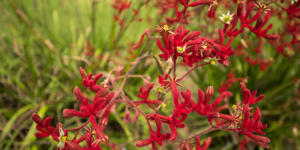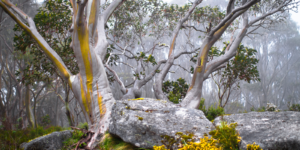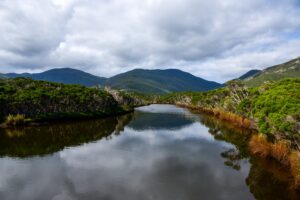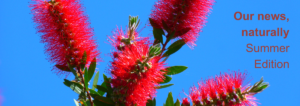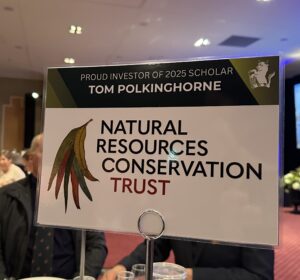Over $234,000 in new grants awarded
Recently, the Trust announced four new grant recipients, who will share in over $234,000 in funding. Read more about the projects that these grants are supporting below.
$99,000 to Co-Exist for expanding their Empowering Youth for Conservation Leadership program further into Victoria and south-eastern Australia.
Co-Exist Australia is a youth-led environmental movement focused on reconnecting young Australians with nature through community-driven conservation efforts.
Funding from the Trust will enable the organisation expand conservation efforts across Victoria, Tasmania, and Southern Australia, by supporting three existing Collectives and establishing two new Collectives in Melbourne and Adelaide. It will also enable the appointment of a part-time Community Coordinator.
Australia faces a biodiversity crisis due to habitat loss, urban expansion, and climate change, necessitating immediate action. Co-Exist Australia provides structured opportunities for youth engagement in conservation.
The project aims to engage a significant number of young volunteers and enhance biodiversity through various initiatives, including:
- Engaging up to 1,500 young volunteers in conservation work
- Contributing up to 3,000 volunteer hours, equating to an estimated in-kind contribution value of up to $120,000
- Planting 1,500 native plants to improve biodiversity and restore habitats
Visit Co-Exist’s website for more information on their successful projects in Queensland and New South Wales.
$62,295 to the Southwest Environmental Alliance to undertake the planning, feasibility and discovery phase of a new regional seed bank.

Based in Portland, the Southwest Environmental Alliance (SEA) aims to restore and rewild urban habitats by establishing a local seed bank and nursery focused on indigenous plant species.
Establishing a seedbank and nursery would ensure a reliable and cost-effective supply of local indigenous plants, boost community involvement, benefit partners, and would contribute significantly to effective, sustainable habitat restoration in Glenelg.
The grant funding from the Trust will enable SEA to complete a comprehensive feasibility study for the seedbank and nursery, which will assess community needs, identify market gaps, seedbank viability and potential partnerships, as well as determine preliminary costings. This phase of the project is expected to occur over the next six to eight months.
Pending the success of the feasibility study, SEA anticipates establishing the seedbank and nursery over the next two to four years. The organisation anticipates that this initiative, once developed, will enhance biodiversity, improve wildlife corridors, reconnect fragmented landscapes and contribute to carbon sequestration.
Up to $49,200 to Wildlife Unlimited to expand their understanding and research of the Mallee Looper caterpillar.

Significant defoliation of eucalypts has been occurring in the Victorian Mallee since 2023, caused by the Mallee Looper caterpillar, a native species.

Damage by the caterpillars (see above image, from Hattah Kulkyne National Park) is leading to tree death, which is also exacerbated by drought conditions. This is having significant impacts on the Mallee ecosystem and threatened bird communities.
The grant provided by the Trust will provide funding for Wildlife Unlimited’s project, which aims to use this crisis as a catalyst for community collaboration and citizen science participation and will leverage existing professional biodiversity networks to enhance collaboration across states.
Through this project, they aim to raise community awareness and encourage citizen scientist participation and will establish five sentinel monitoring sites to gather critical data on the Mallee Looper outbreak.
Data collection will include damage assessments, remote sensing correlations, and monitoring of moth and caterpillar emergence and this information will be used to fill key knowledge gaps in understanding and responding to the Mallee Looper outbreak.

$23,750 to DJAARA and wood4good for the development of an investment model and collateral to increase the opportunity for 3rd party investments into land buy back, through their cultural forestry and carbon credits initiative
Funding from the Trust will enable the Dja Dja Wurrung Clans Aboriginal Corporation (DJAARA) to further develop a finance proposal to calculate what rate of blended finance and concessional capital is needed for the purchase of land for cultural forestry and carbon credits initiatives.
Through the purchase of land, DJAARA, with the assistance of wood4good, aims to establish regenerative forests that have commercial timber and generate carbon (and/or biodiversity) credits. Land purchase would have multiple benefits, including providing an opportunity for DJAARA to hold, access and heal Country under freehold title. The land could also provide resources for cultural use and sale (e.g. timber for artifacts, tools and weapons, seed, bushtucker) and would enable further economic development and diversification for DJAARA.
Faunal monitoring at Cranbourne
During 2025, Mal’s Ecological & Environmental Services was again commissioned by the NRCL Board to conduct a faunal camera monitoring program at the League’s Cranbourne West property. This year marked the 10th camera monitoring research survey program conducted at the property since the program began in 2017 and was designed to determine whether Southern Brown Bandicoots and other threatened fauna species exist on the property. Monitoring also helps to determine any population changes of previously identified fauna species. The monitoring is also useful to determine pest plant and animal control requirements and has helped inform regular fox, feral cat and rabbit control programs.
For the 2025 program, cameras were set up in six locations, with more than 1,000 images of fauna captured during the monitoring period.
More camera monitoring will occur in spring this year and again in autumn 2026.
Due to construction works on the new wetlands, an exclusion zone prevented monitoring in this area during autumn. However, construction of the wetlands is nearing completion and surveys will be reintroduced to the area later this year.
In total, 58 fauna species have been observed during the 10 camera monitoring periods since 2017 and of these, 48 are indigenous fauna species, and 10 are introduced fauna species. Twelve of the indigenous fauna species monitored are of state or regional significance. View the full report from autumn here.




Congratulations to Alyssa, our latest WELA scholarship recipient
Alyssa Britnell is the most recent recipient of the Trust funded Women’s Environmental Leadership Australia (WELA) scholarship.

Alyssa has a strong focus on healing country through forest recovery and promoting First Peoples’ self-determination. As an environmental conservationist, forest firefighter and natural disaster emergency responder, she has learnt to recognise signs when country is sick; and use her Environmental Law and Policy background to address and reform legal barriers hindering its sustainable recovery. Alyssa is guided by First Peoples’ principles, to promote forest and ecosystem health. In her personal time, Alyssa enjoys trail running, hiking, and participating in local tree planting and rubbish clean-up initiatives.
Upon receiving the scholarship, Alyssa said:
“I am grateful to be a recipient of the Natural Resources Conservation Trust Scholarship to participate in the 2025 WELA National Leadership Program, where I have been able to develop a strong network of likeminded women and gender-diverse people who have been able to support, inspire and challenge me, both personally and professionally, to make impactful change in the environmental industry. I am looking forward to continuing to enhance my skills, leadership capabilities and understanding of systemic change to effectively respond to our climate emergency and have a long and fruitful career, without burnout.”
Congratulations Alyssa!

New Futures farmers onboarded
Following the initial New Futures for Victorian Landare pilots in 2024, 20 more farmers and landholders have put their hands up to explore landscape improvement opportunities on their properties in the Ian Potter Foundation and Trust funded pilot program.
The Landscape Impact Advisors for the Heytesbury District and Kiewa-Wodonga projects have now completed on-farm assessments using the Regen Farmers Mutual Digital Twin platform, exploring their property land management units, production goals and undertaking a carbon emissions estimate.
The results from the Pilot 10 farmers in each landscape will assist the New Futures Working Groups to inform and develop their Landscape Action Plans and identify prospective investment opportunities.
A summary of the property findings was presented at the landscape and farm story workshops held with stakeholders in July. Hosted by Regen Farmers Mutual, these workshops built on the farm assessments and Land Management Unit trainings, to begin to refine the specific interventions and opportunities in each landscapes.
The Heytesbury District Landcare Network participants also visited the Doolan family farm, to observe interventions in action, visiting the dairy powered by solar panels, hot water heat pumps and innovative plate coolers used to pre-cool milk before it enters the storage vats. Attendees also visited a mixed pasture paddock featuring peas and broadleaf turnip in the mix, followed by a showcase of “Green Lightning” technology, a pilot machine able to pull atmospheric nitrogen from the air and create liquid fertiliser, as an alternative to urea.
The New Futures processes continue throughout the rest of this year, with investor sessions and action-planning workshops.

Looking Back – Charlton community plantimg
In the winter of 1947, over 600 Charlton residents came together to undertake planting of a community forest as part of the Save the Forest campaign.
40,000 trees were planted that year, with 1,500 of these planted on one cold winters day, forming the Charlton Community Forest.
To promote the benefits of forests and this initiative to the broader community, the event was filmed, and the film now forms an important part of NRCL’s archives as the Save the Forest campaign would continue for another four years and eventually become NRCL.
Extensive media coverage also included front page of the Charlton Tribune and the film was screened at venues across Victoria, including at the Royal Agricultural Show in Melbourne.
One of the most inspiring aspects of the initiative was that all residents, young and old, with many still at school, came together and planted a tree for the public benefit that a community forest would bring.


